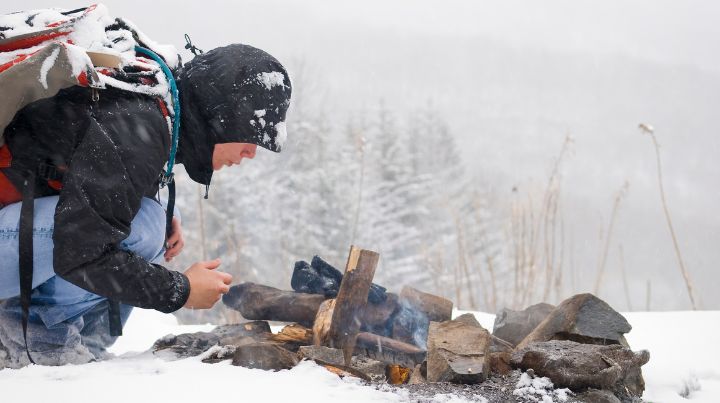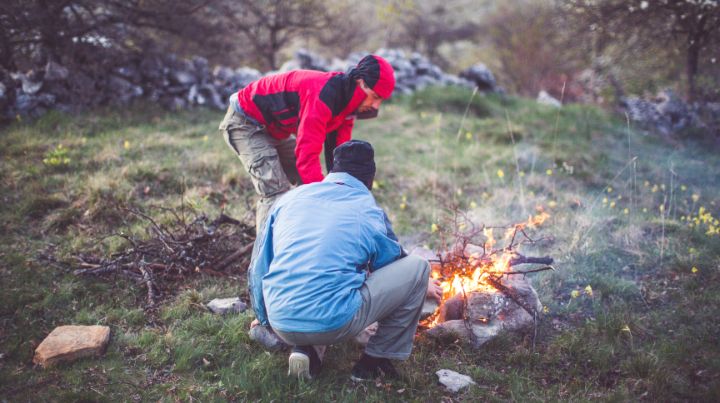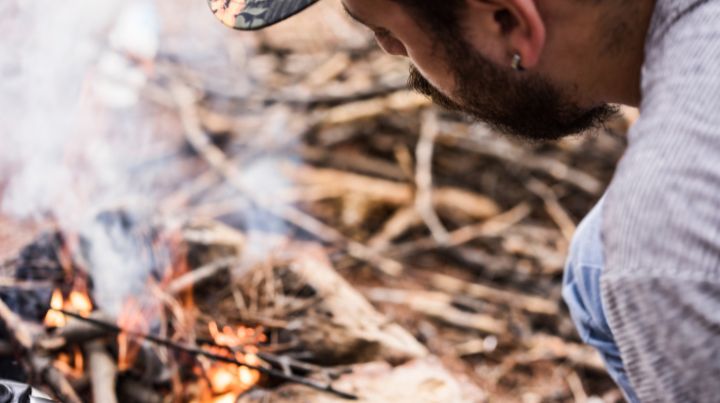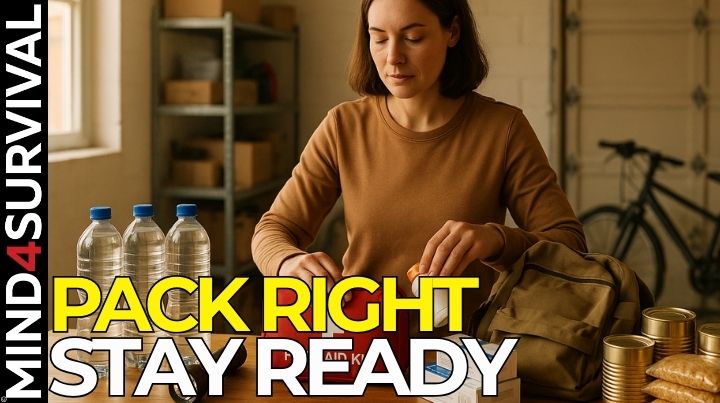What Are the Fire-Starting Tools Preppers Forget About?

Let’s be honest. Being able to consistently start a fire in a minimal amount of time is likely to be the most challenging bushcraft skill a prepper has to master. If you’ve ever experimented with various methods of making fire, you know this to be true.
It always seems as if the wood is too wet, the fuel just won’t light, the fire won’t stick around, or the wind keeps snuffing out whatever little embers you can get going. But like any other problem that humanity has faced on a daily basis, there are tools out there that can help. Everybody already knows about fire strikers, matches, and lighters. But there are other tools out there that can help us as well. These are the forgotten tools of fire starting.
So, what “forgotten” tools can we use to improve our ability to get a fire going? Let’s take a closer look.
Practice Tools
Ideally, we could all make a fire with nothing other than what we would find in the woods around us after a skiing mishap. Perhaps it’s an avalanche that separates us from our gear. Maybe we just didn’t pack any fire-starting gear to begin with. Whatever the cause, the case is that you’re now stranded in the woods without any gear — yet desperately need to get a fire going.
I think this is where having had practice comes into play. Arguably, one of the best means of primitive fire starting is via a bow drill. The problem is that this is a difficult task to learn, and without having dealt with a lot of previous failures with this method, someone is liable to think that this method just doesn’t work “for them” in a disaster situation.
When you first learned how to shoot a gun, did you start with very long distances and quick shots, or did you start with maybe two shots a minute from a relatively close range? You made the conditions ideal so that you could learn the basics. You moved on to more difficult shots after the basics were mastered with ideal conditions.
The same principle applies to fire starting. Why not learn how to use a bow drill under the best possible conditions possible first and then be able to move on to the more complex, “real world” scenarios later?
This is why I like this bow drill practice tool. It will eliminate the barrier of “I don’t know how to set one of those up, so I’ll never practice making one,” will get you out experimenting with making fire, and ultimately, prove to be a valuable tool for improving your ability to start a fire.
A Fire Blowing Tube
While not a necessity, one of the most convenient tools to have at your disposal when starting a fire is a tiny, collapsible fire-blowing tube. These are just big straws that allow you to pump air into your fire without inhaling a lungful of smoke in the process.
Fire needs oxygen to survive, and this little tool will help you to easily do just that.
A Battery Operated Pocket Bellows
Admittedly, this isn’t a product you’re likely to have with you as you’re backpacking to safety. But this is a convenient tool to keep on hand should you be at your home when the power goes out and need to get a fire started in a hurry, particularly if you don’t enjoy feeling as if you’re blowing up a balloon, as can happen with a fire-blowing tube.
This is a battery-operated air-blowing device that will help you get your fire started with minimal work. Is it something of a gimmick? Eh, maybe. But there’s no denying that a bellows of any form is an excellent way to get a fire going, and if you don’t like the idea of putting something in your mouth (germs, maybe?), still feel that a fire-blowing tube doesn’t get you out of the smoke as much as you would like, or are looking for a tool that requires minimal effort, this is it.
A Hand Crank Bellows
If you’re doing a lot of charcoal grilling because a summer power outage has left your family in the dark, you’ve probably grown frustrated with how difficult it can be to get a charcoal grill to light – particularly if you’ve run out of lighter fluid (the cheater’s way out). A hand crank bellows is an excellent alternative if your fire isn’t starting fast enough to keep your hungry family happy.
One of the benefits to this method over the pocket bellows is that you don’t have to worry about batteries. Anytime that the power goes out, batteries are worth a premium. You may not have the batteries to spare on a bellows in a long-term grid-down world.
If that’s the case, a hand crank bellows can be a happy compromise. You’ll still get improved fire starting ability, but you’ll also get something that doesn’t require anything else to function. Just grab, crank, and you’re good to go.
Pre-Fab Tinder
Knowledge of chemistry is a form of technology, and technology is a tool. For this reason, I consider fire starters of any kind an excellent tool to get your fire roaring. While it’s vital to know how to start a fire without using any sort of pre-made tinder whatsoever (because what do you do when it runs out?), this doesn’t mean that these aren’t valuable tools.
A few of these can easily be tossed into a bugout bag to help to keep you going for at least a few days, and if you end up trapped on the side of a road after a hard snow decimates your area, these could be just the ticket to keeping you warm and alive.
Are they the “cheaters” way out to bushcraft? Yeah, but who cares? Better to have not been a bushcraft purist and remain alive than it is to be a frozen corpse with a bundle of frayed bark in his hands.
Fire-making Skills are Essential for Survival
There are simply too many circumstances where lack of heat can kill you. But having the right tool at your disposal can help to keep you safe. What are your thoughts on the above tools? Have you tried any of them? Are there others that you recommend? Tell us your thoughts below.
Additional Resources:
- Does the Fat Rope Fire Stick Really Work in Wet Conditions?
- The Importance of Camping
- How to Use a Fire Starter; The Survival Guide (2022)
- 7 Best Emergency Sleeping Bags for Survival (2022)
Related Articles
FREE Guide
Read the Best Seller
Join Mind4Survival
Stay informed by joining the Mind4Survival! 100% Secure! 0% Spam!
Affiliate Disclosure...
Mind4Survival is a free, reader-supported information resource. If you make a purchase through our link, we may, at no cost to you, receive an affiliate commission.
Do You Want To Be Ready No Matter What?

Download our free 39-page guide with interactive, 7-Day Emergency Kit Checklist and take the first step toward real preparedness.
- Know exactly where to start.
- Save time and money.
- How-to build a complete Basic Emergency Kit.
- Level up your safety and security.
Join Mind4Survival
Stay informed by joining the Mind4Survival! 100% Secure! 0% Spam!








Dryer lint, with a few dabs of vaseline inside a toilet paper tube. Great kindling. Just don’t stuff too much lint in the tube or it will just smolder.
I find it interesting that you went from “losing all your gear”, so you must use primitive fire making tools, to suggesting a bunch of gear you would have to buy and take with you.
I always carry a wallet, (you never know when you might need to show your ID), so I carry a pocket sized Fresnel lens in my wallet.
(Yes I know it does not work well in low light conditions. I also carry a book of matches in my wallet.)
But there are many ways to help make sure you are never without fire making tools.
The other problem is in not making the right sized fire. Most people make way to large of a fire for their needs. Usually it produces way to much heat and requires way to much fuel to keep it going. This aspect of Fire making is seldom mentioned. You need to make the fire size to fit the purpose for the fire.
Most of the time there are ways (bush crafting skills), to overcome the problem of wet fuels or strong winds. Technology and these gadgets make life easier and simpler. I have nothing against them, other than you need real Bush crafting skills to back them up.
Trying to replace Knowledge and Skill with technology, is a Fool’s Errand. Sooner or later it will let you down, so you better have real knowledge and skills to fall back on.
Flint and steel are in my EDC kit. Also a Bic lighter. Even with no fuel, the lighter will still produce a spark Dryer lint ,kept in water proof container works great., For wet or snowy weather, think about cotton balls soaked, d in petroleum jelly (Vasolin). Air tight large containers can be gotten from your local pharmacy for free if you ask nicely, Otherwise old school 35 MM film cans maybe sealed with candle wax, or small Zip Lock bags. The scrapped off candle wax could be tossed in the kindling to help things along.
If trying to start on wet or snowy ground, lay down a layer of wood first to keep the beginning of tinder and kindling of your fire dry.
1/2″ or better diameter lit candles (candle stubs, too) work better than matches ( you still have to light the candle/stub )
Once the fire is going you can blow out the candle/stub and put it back in your kit.
Links to suggested items would have been nice…
The comment about the size of the fire to needs is a very good one.
In the photo of the two men in red and blue coats, it appears that they haven’t adequately located their fire, appearing to be in the middle of a field of grass…..their branches are sticking out over the sides of their fire , making it easy for them to burn off and fall outside the fire parameters…..
Shouldn’t they have dug a hole, or lined it with rocks, or both to avoid setting the field on fire?????